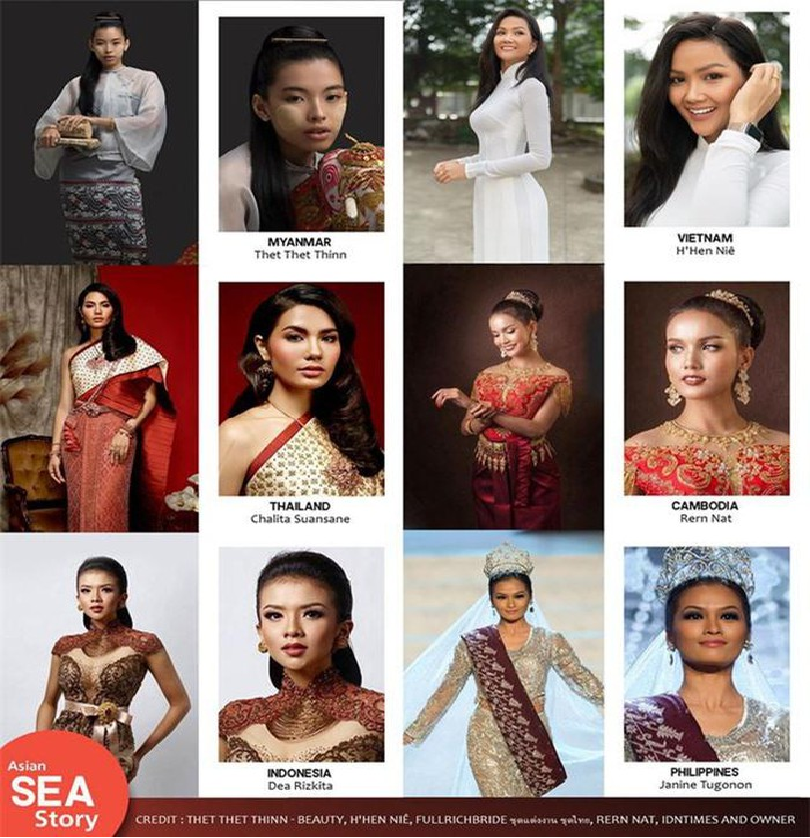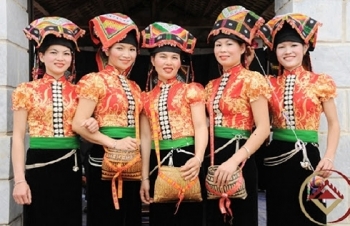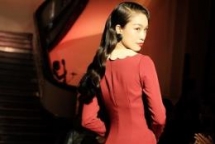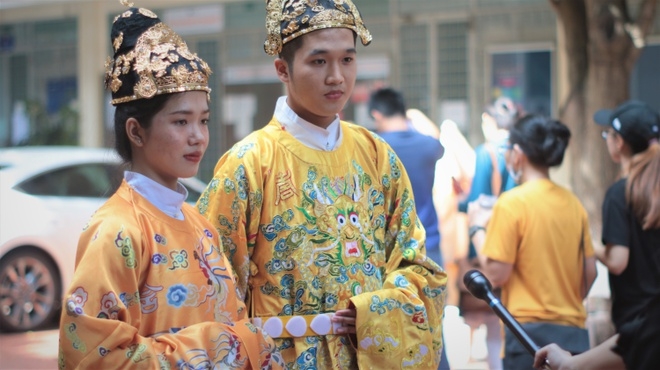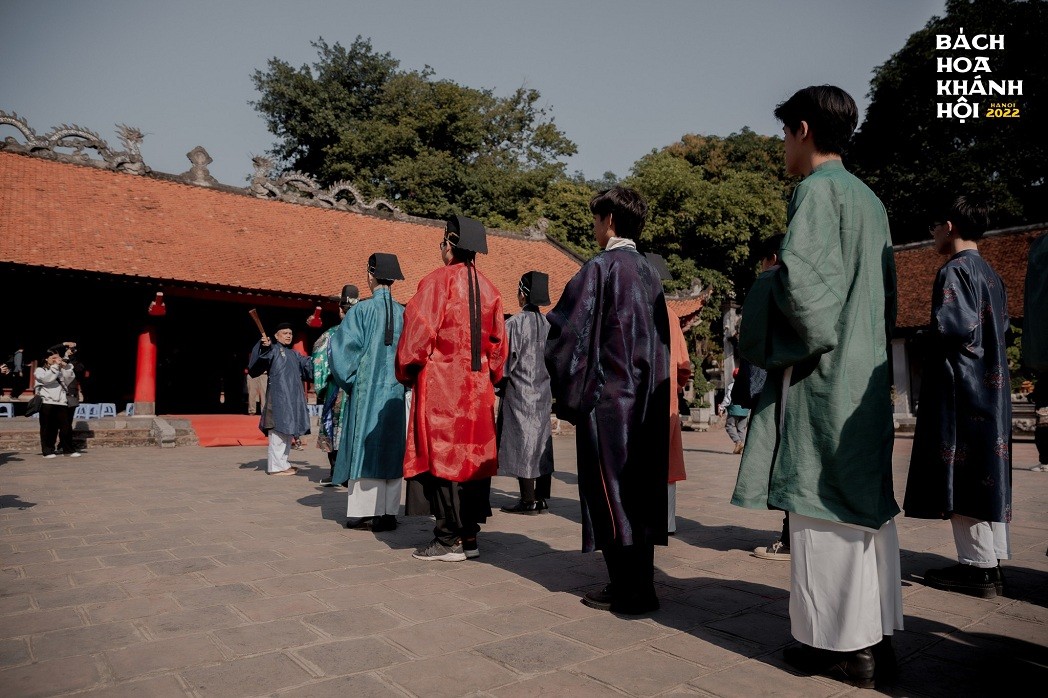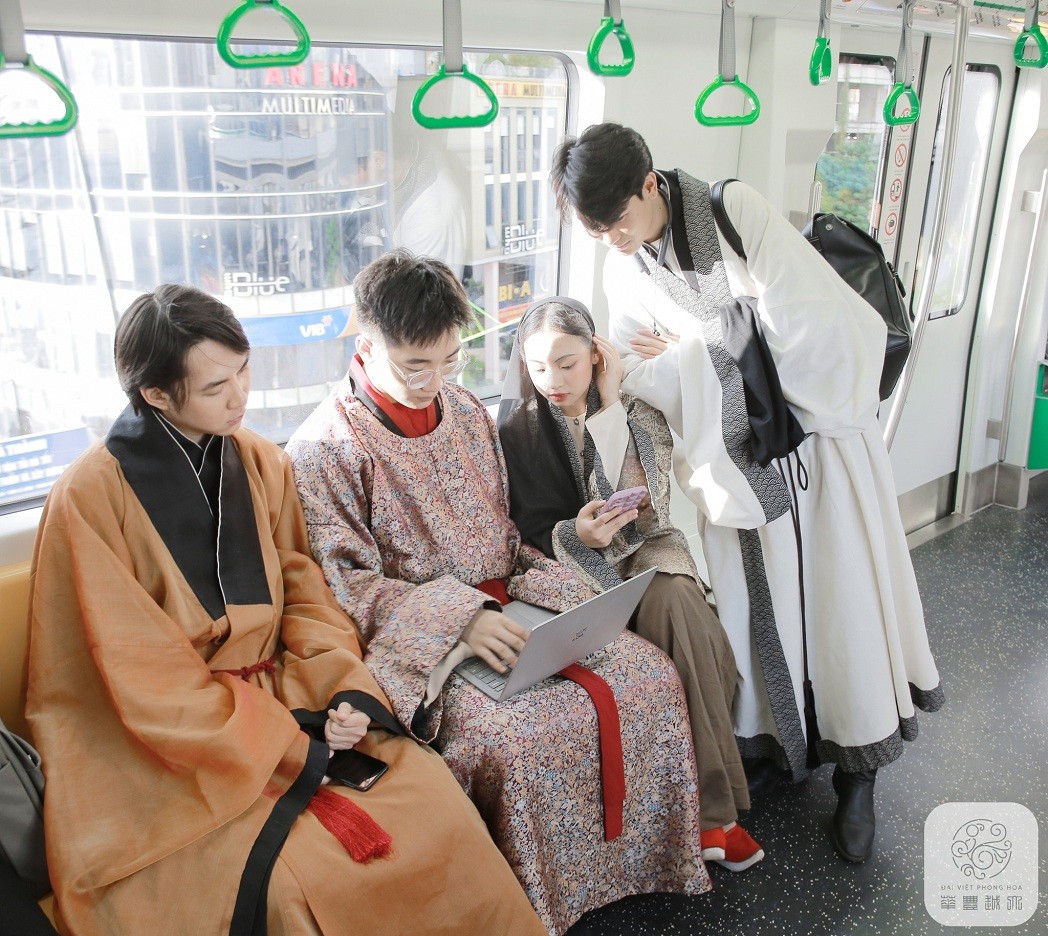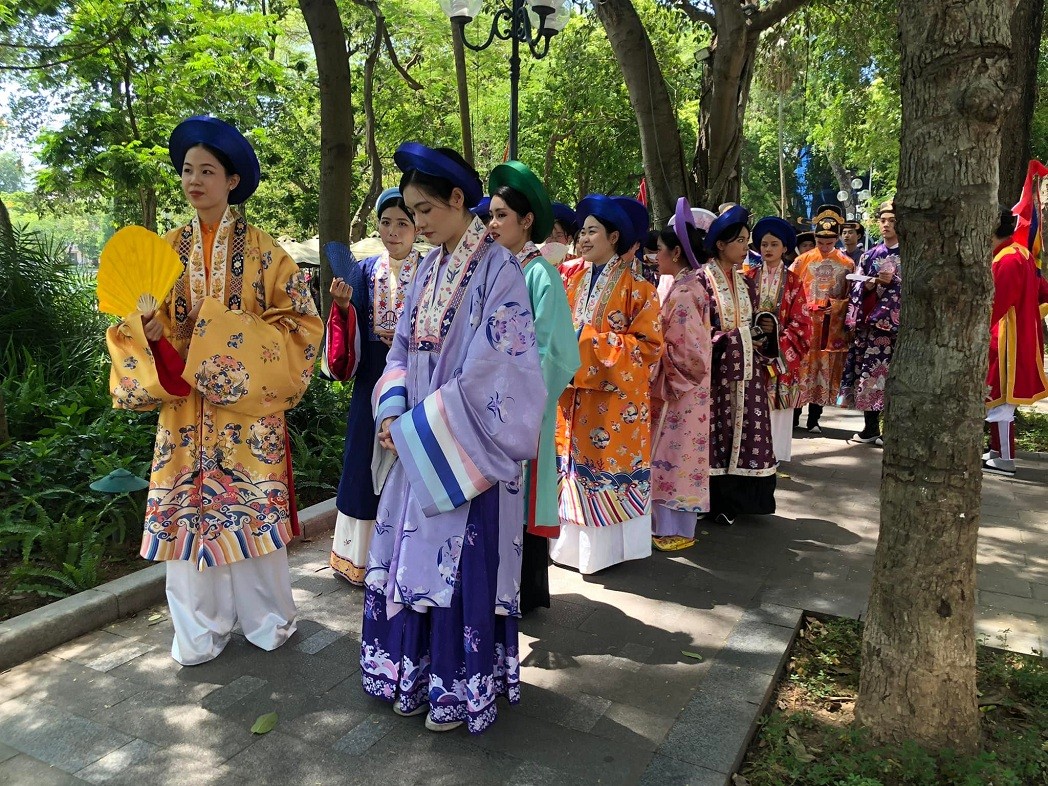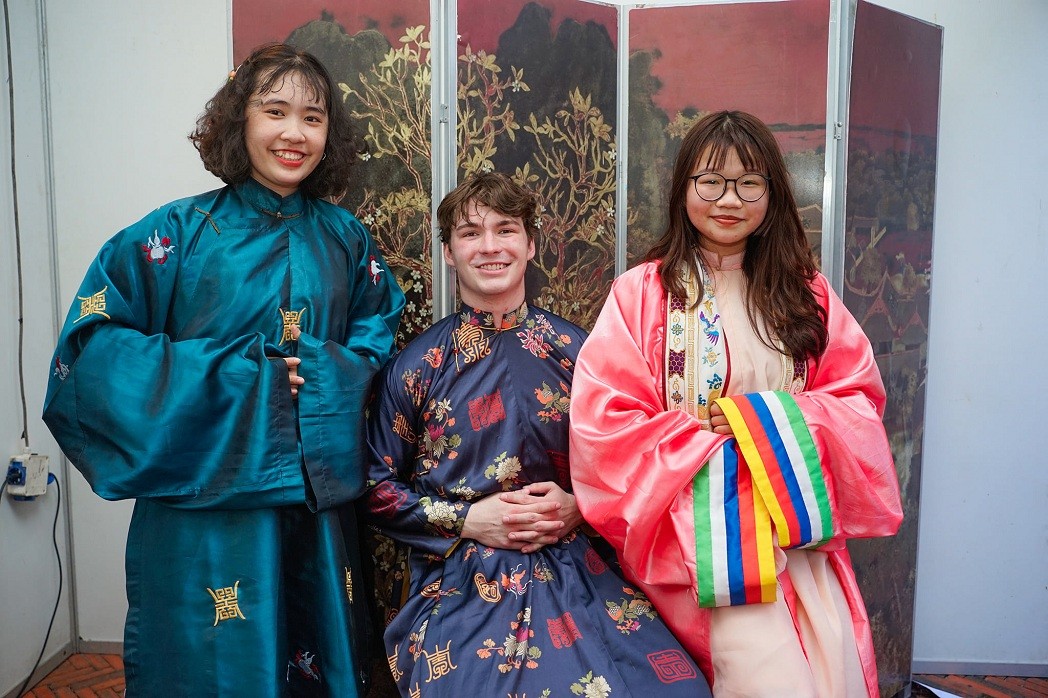Five ancient costumes of Vietnam that you might not know
| H’Hen Nie listed among top 20 most beauties in national costumes in Southeast Asia | |
| Unique costumes of Northwest ethnic minority people | |
| Institute of Vietnamese Costumes officially makes debut |
Doi Kham dress
Doi Kham dress under the elites of the Ly-Tran dynasty, can be occasionally spotted on movies or documentary films. The garment boasts two parallel flaps, which literally gives it the name Doi Kham. People normally just wear them down the body or use as a coat.
Doi Kham dress is often worn with vibrant color on the outside and lighter colors on the inside, with the last one is white.
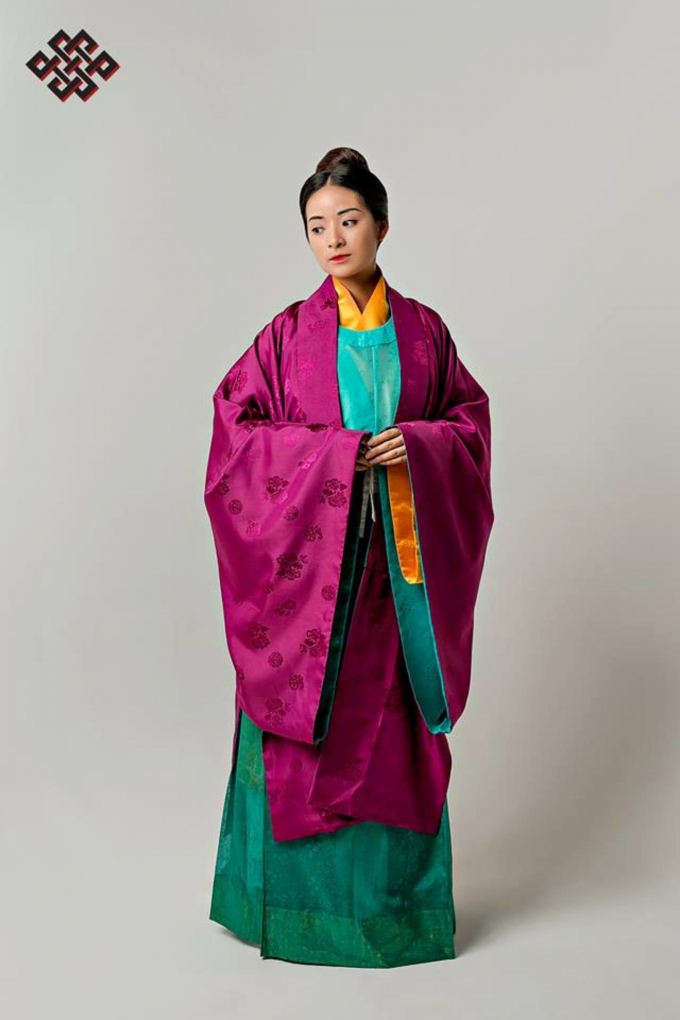 |
| (Photo: Travel Mag) |
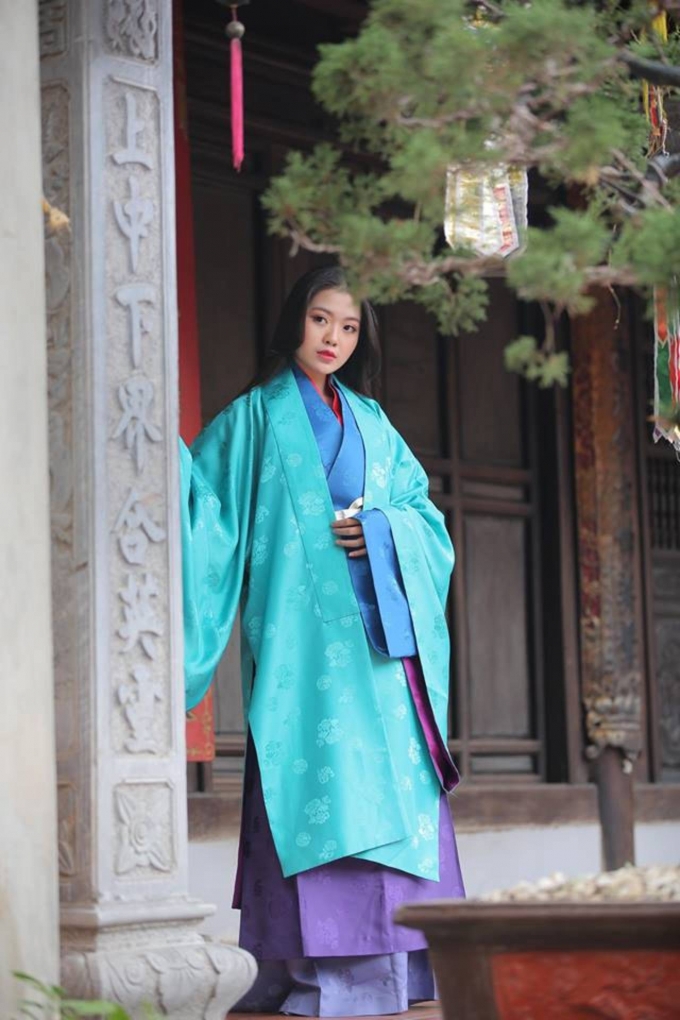 |
| (Photo: Travel Mag) |
Giao Linh dress
Giao Linh dress is also called Truong Linh Trang Vat, or Doi Linh dress. The shirt has an intersecting neck in front of the chest, the left flap is pressed against the right flap when worn. Its sleeves are often loose and narrow.
Giao Linh dress bears resemblance to Japan’s and China’s traditional costumes, however, its two uneven flaps on the outside and inside make a distinct difference.
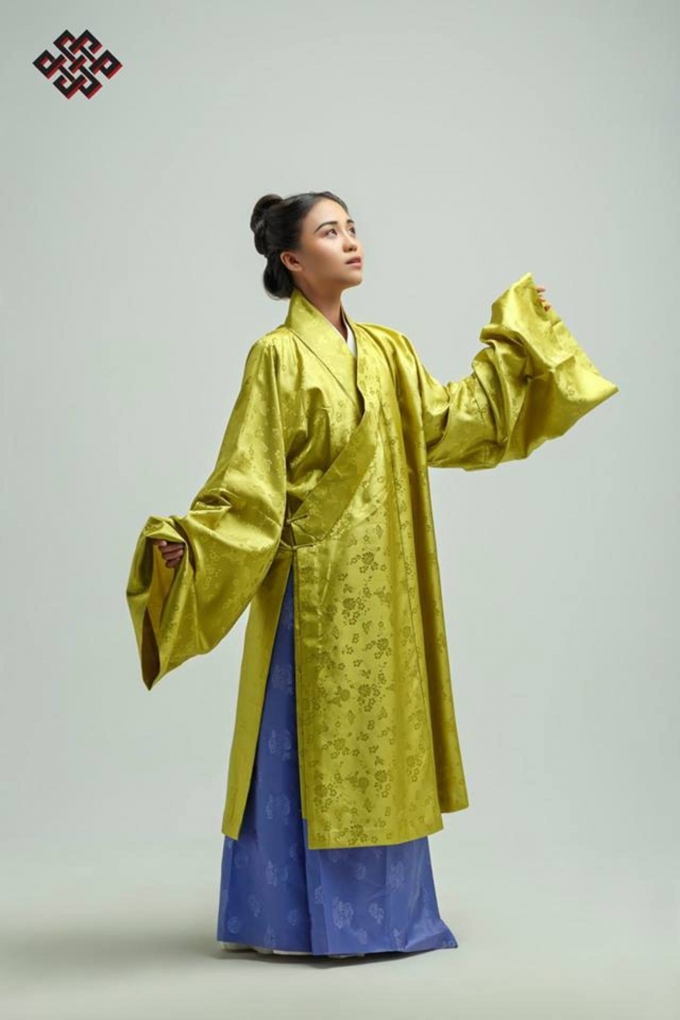 |
| (Photo: Travel Mag) |
Nhat Binh Dress
Nhat Binh dress was designed for royal females, including the Princess, Queen Mother. The dress is quite similar to the Phi Phong dress of China’s Minh dynasty, however, it was adapted a lot to suit the Vietnamese customs. Nhat Binh dress
The garment is often red or blue to present nobility, luxury, and royalty. Patterns of phoenix, dragon, etc., are often sophisticated hand-embroidered on the dress.
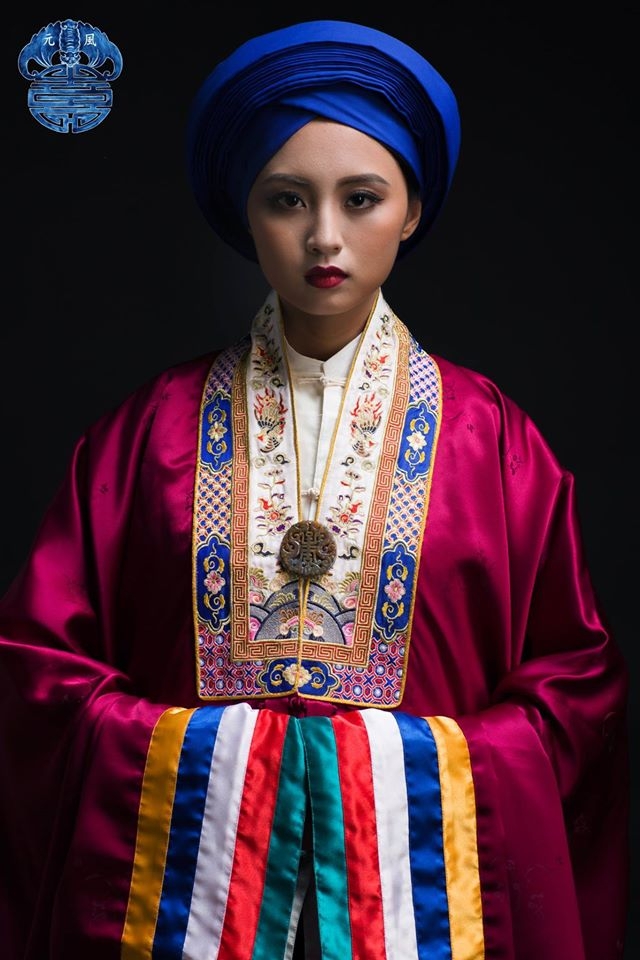 |
| (Photo: Travel Mag) |
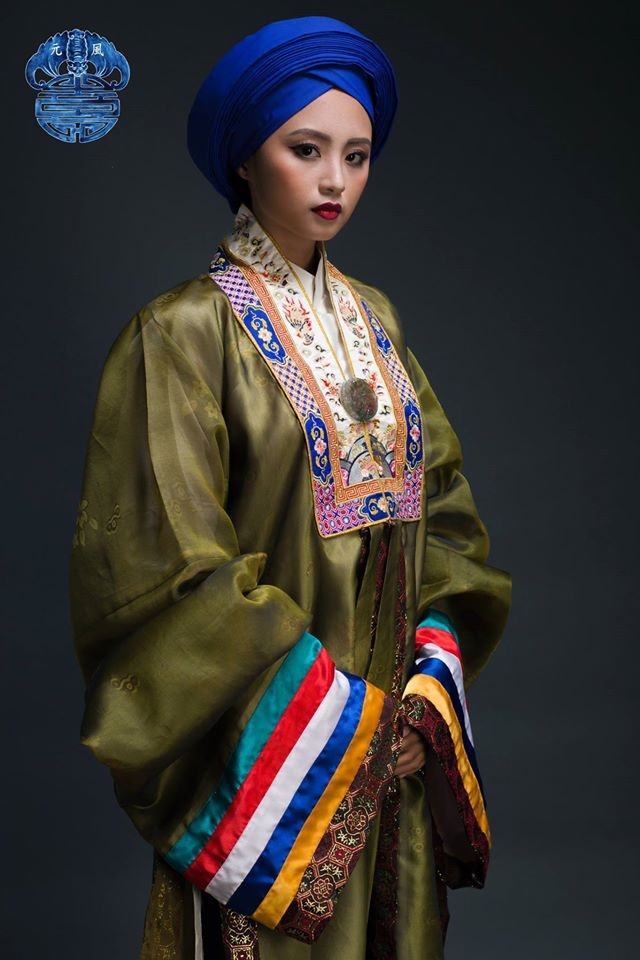 |
| (Photo: Travel Mag) |
Tac dress
Tac dress was worn by all class of people during important occasions, especially in weddings. It was ubiquitous during Nguyen Dynasty.
The dress is still worn in modern days during engagement ceremony or at film set recording life at Vietnamese countrysides.
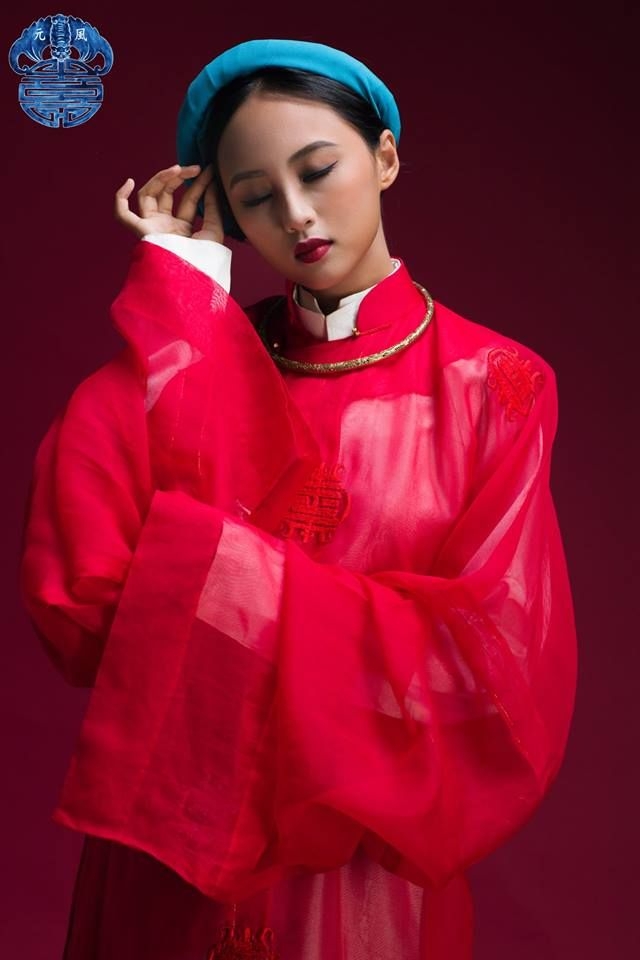 |
| (Photo: Travel Mag) |
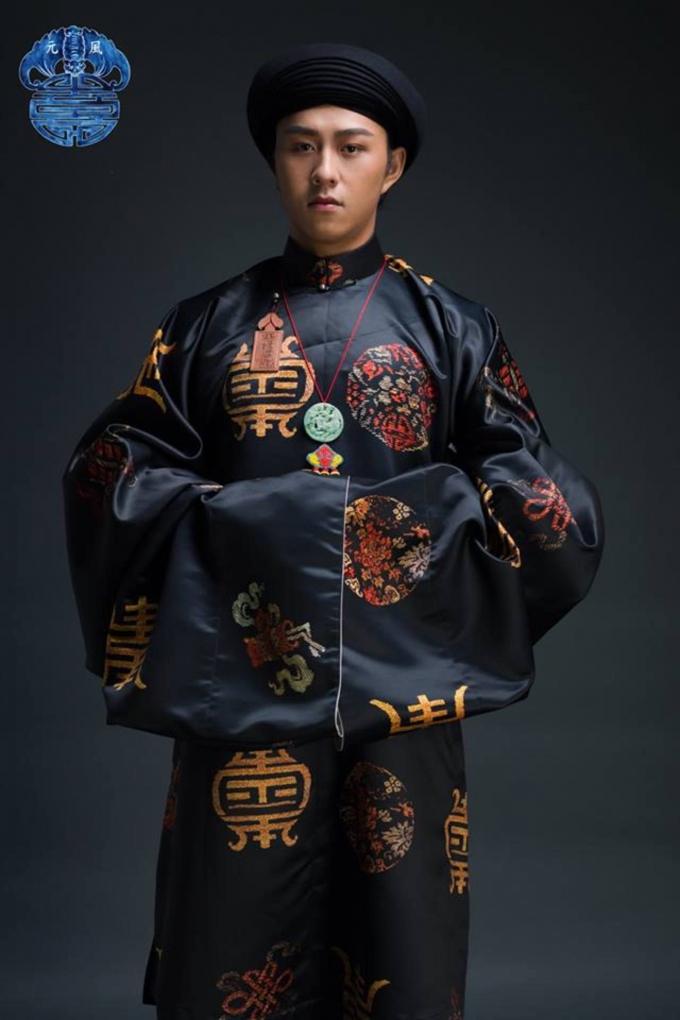 |
| (Photo: Travel Mag) |
Ngu Than dress
In 1744, Nguyen Lord reformed the costumes in Dang Trong (southern Vietnamese), giving birth to the ancient Ngu Than dress. The garment is simpler than the previous models, boasting a standing neck, right button, narrow sleeves combined with long pants. It has 5 parts with 4 main flaps and 1 side flap.
Ngu Than dress is often colored in elegant hue.
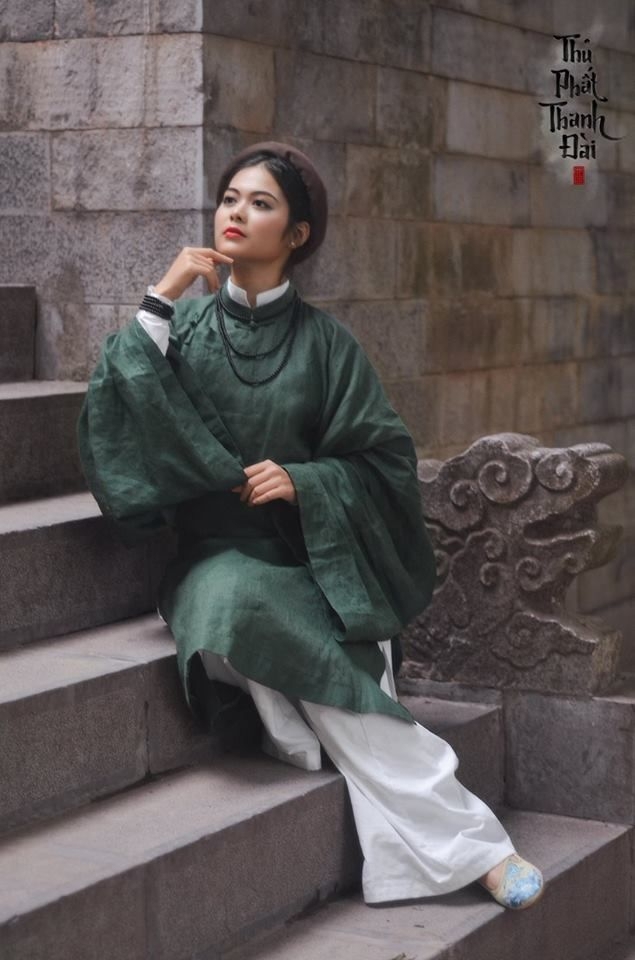 |
| (Photo: Travel Mag) |
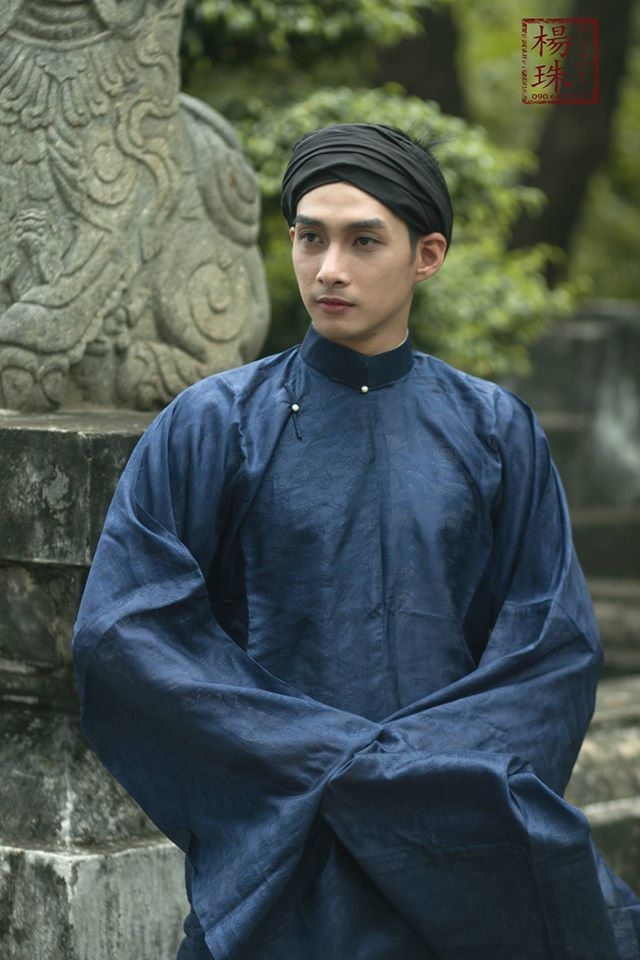 |
| (Photo: Travel Mag) |
| On January 10, a festival called “Toc Xanh – Vat Ao” showcasing numbers of Vietnam’s ancient garments was held in Ho Chi Minh City. The project is initiated by a 24-year-old Ton That Minh Khoi – a history enthusiast in cooperation with HCMC University of Social Sciences and Humanities.
To date, “Toc Xanh – Vat Ao” is the biggest festival embracing ancient costumes in HCMC. The event will last until January 16. “The fact that the young generations are alien to old costumes is quite a letdown and concern for those into traditional culture like us”, Khoi was quoted by Zing News. “For this reason, we decided to launch the project on a large scale to promote ancient garments and Nguyen dynasty’s costumes in particular among university students in HCMC. Khoi said he’d continue the project in the future with detailed plans focusing on young generations as “they are the main force of modern society”. He added that the ancient costume promoting festival would be expanded to high schools across the city. |
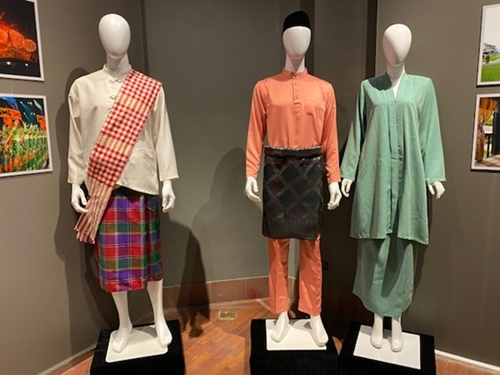 | ASEAN traditional costumes exhibition launched in Hanoi The exhibition which displays traditional costumes from ASEAN countries is slated to take place from October 21-28 at the National Museum in Hanoi. |
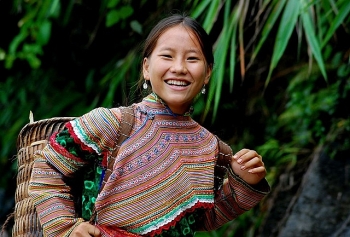 | The uniqueness of Vietnamese upland ethnic women’s costumes The costumes of ethnic women in Lao Cai province, northern Vietnam boasts distinctive features that cannot be confused with other ethnic groups’. |
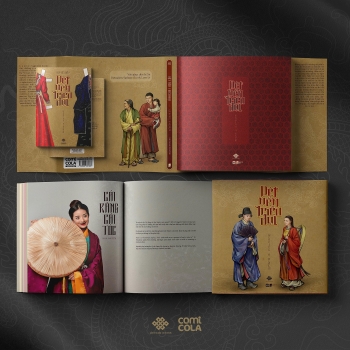 | Weaving a Realm: Bilingual book introduces Vietnam's costumes from the 15th century The first bilingual art book detailing the ancient Vietnamese costumes worn in the 15th century has been released recently. |
Recommended
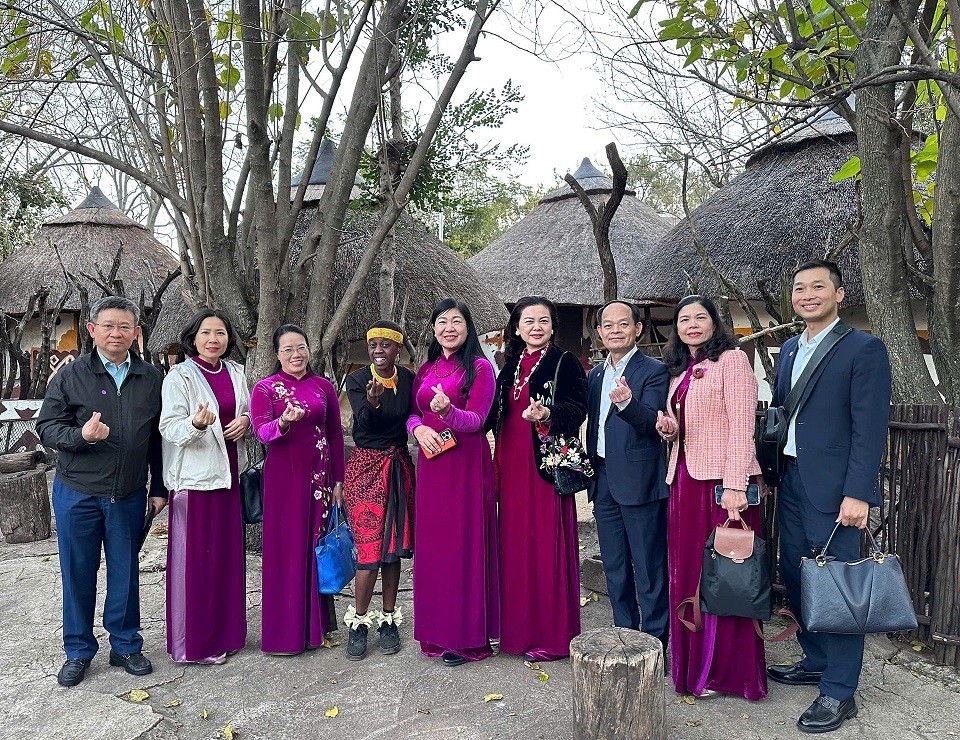 Viet's Home
Viet's Home
Hanoi, South Africa Strengthens People-to-people Exchanges, Expands Multi-sector Cooperation
 Viet's Home
Viet's Home
Hue City to Raise Awareness on Mine Accident Prevention
 Focus
Focus
Vietnam Leaves Imprints on the World Peacekeeping Map
 Viet's Home
Viet's Home
“Global Vietnamese Singing 2025” - Connecting Hearts Longing for Homeland
Popular article
 Viet's Home
Viet's Home
Vietnam’s People's Public Security Force Actively Contributes to UN Peacekeeping Operations
 Viet's Home
Viet's Home
HAUFO Enhances Competence of People-to-People Diplomacy Personnel
 Viet's Home
Viet's Home
Hands that Reserve Da Long Brocade Craft
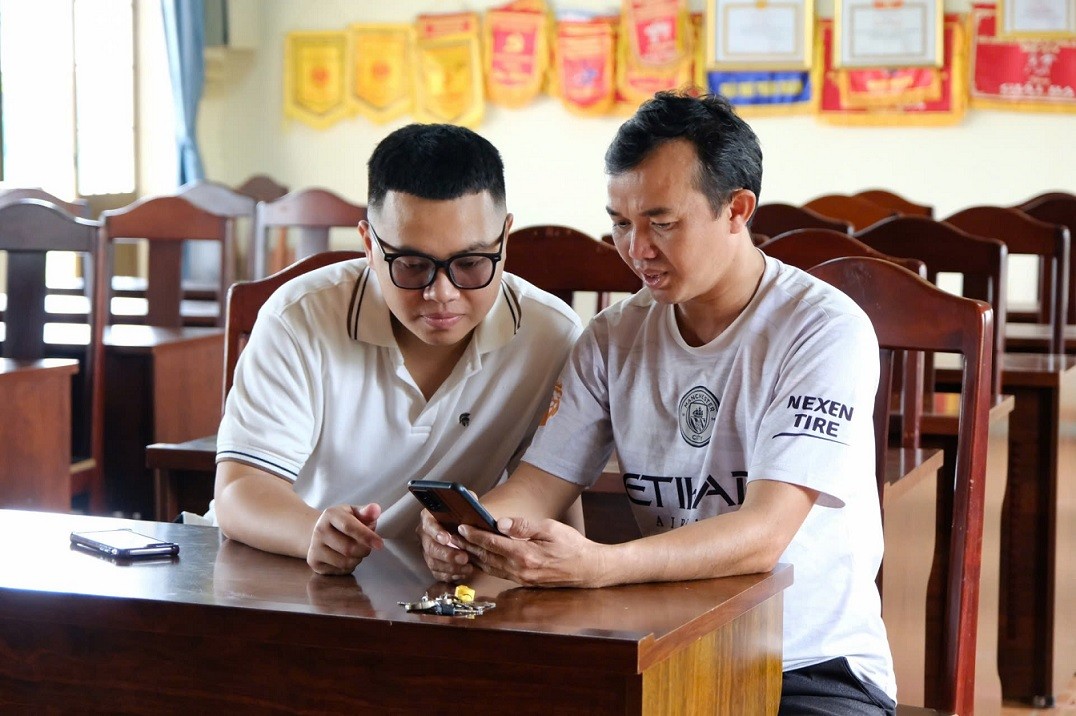 Viet's Home
Viet's Home

